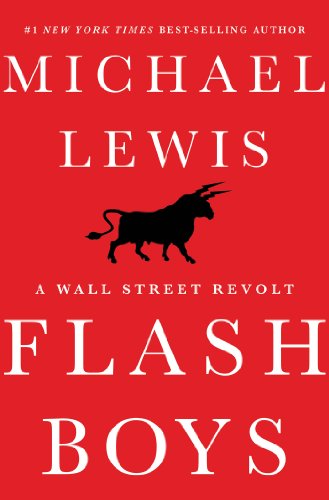Book Review: Flash Boys
Published:
Flash Boys by Michael Lewis is a story about Wall Street dysfunction post-financial crisis. He documents the rise of high frequency trading, the adjacent, enabling institutions, and people who tried to stop it—the flash boys.

Here’s the paperback and audiobook.
Utility: ⭐⭐⭐ (3/5)
Lewis tells a fascinating story without delving too deep into the details. He gives great examples that illuminate how high frequency traders make money. He also provides a sensible introduction to the financial sector and types of firms. The unspoken theme is the most useful lesson of the book—that Wall Street professionals are often clueless.
Writing: ⭐⭐⭐⭐ (4/5)
The book masterfully weaves together storylines to assemble the group known as the flash boys. A thoroughly entertaining read, Lewis manages to imbue excitement into a subject as mundane as money management. Some of the plot jumps were a little jarring, but it was mostly smooth and always entertaining.
Notes
- RBC is known as one of the nicer banks. A star employee, Brad Katsuyama, noticed that orders were behaving strangely—prices would rise just as a buy order was executed. He realized that HFT firms were racing to various exchanges and conducting arbitrage, so he wrote a tool with built-in delays to block them.
- High frequency traders were protected by bnefical relationships with banks and lobbying in Washington. Banks would often grant traders access to their “dark pools”—private stock exchanges—for a fee, enabling them to skim money off of the bank’s investors.
- Russians are often found in the technology and algo departments of high frequency trading firms.
- IEX was an exchange designed for fairness and subject to rigorous testing. Two partners at Goldman, realizing that they could never win the competition in speed, decided to give IEX a chance.
